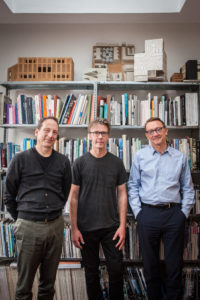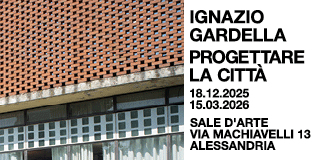The British Council at Venice Biennale 2018 will present “Island”, the British Pavilion curated by Caruso St John Architects in collaboration with the artist Marcus Taylor. The pavilion will be open to visitors but it will appear empty. On top of the roof a scaffolding will support a new elevated piazza which will welcome everybody to experience the British Pavilion from a different point of view. The curators of the Biennale, Yvonne Farrell and Shelley McNamara, said: “Freespace can be a space for opportunity, a democratic space, un-programmed and free for uses not yet conceived. There is an exchange between people and buildings that happens, even if not intended or designed, so buildings themselves find ways of sharing and engaging with people over time, long after the architect has left the scene.” This seems to be the promise of “Island”, a place of both refuge and exile. To know more about it we have interviewed Caruso St John Architects, established and estimated British practice, founded in 1990 and 2016 RIBA Stirling Prize for the Newport Street Gallery in London.
Last June during the launch of the 2018 Venice Biennale theme, Yvonne Farrell and Shelley McNamara declared: “It is examples of generosity and thoughtfulness in architecture throughout the world that will be celebrated in the 16th International Architecture Exhibition. We believe these qualities sustain the fundamental capacity of architecture to nurture and support meaningful contact between people and place. We focus our attention on these qualities because we consider that optimism and continuity are part of it. Architecture that embodies these qualities and does so with generosity and a desire for exchange is what we call Freespace.” How does your “Island” interpret the Grafton Architects’ idea of Freespace?
We have responded to the theme of Freespace with the construction of a new meeting space in the Giardini. Visitors approaching the British Pavilion will find the building covered with scaffolding supporting a wooden platform at roof-level. The ambiguous image of the pavilion covered in scaffolding, ultimately turns out to be a positive gesture. “The ambiguous image of the pavilion covered in scaffolding, ultimately turns out to be a positive gesture. Rather than closing up for the summer, or keeping people out, our project is one of generosity, we are inviting visitors to the Biennale to come up to the platform at the head of the Giardini to meet and see the view.”
In your presentation you said that “an island can be a place of both refuge and exile”. What does it mean to represent UK in one of the most important architecture international exhibitions with the theme of “Island” just one year before Brexit?
We are covering the pavilion in scaffolding, so that in 2018, the last year that the UK will remain in the EU it is unclear whether the pavilion is open or closed, whether it is being demolished or perhaps renovated. The rooms of the pavilion will be open to visitors, but they will be empty. The gesture is perhaps a bit romantic, but it is more funny, or very sad.
Rather than presenting an exhibition you are offering an experience of the empty space of the British Pavilion and its rooftop. What outcome do you hope to generate with your design?
The proposal has several dimensions; the construction of spaces that you can visit, the discussions and performances that will take place there, the publication (“The Spaces”) with its texts, imagery and poetry, and photographs that will be taken of it. Through all these different impressions the themes are exposed. We hope that even people who don’t get to visit it but see it in the media will discuss it and have their own idea of its provocation.
You’ve collaborated with Marcus Taylor at the UK National Holocaust Memorial Competition but this is the first joint commission between an artist and an architect at the British Pavilion. What should we expect from the collaboration between Caruso St John Architects and the artist Marcus Taylor?
Marcus’ work has always had an architectural scale, and he’s interested in making buildings. We’ve always been interested in art and enjoy working with artists. So it’s a good collaboration. Artists have a broader, more intuitive way of working than architects, who are restricted by many conventions. So it will be a different affair from most architecture biennales, and its effect more difficult to describe. Art shouldn’t be easy to understand, easy to describe, but just be somehow powerful and affecting. We hope that all the spaces of the pavilion will have that feeling.
Cover photo: The British Pavilion, Venice © John Riddy



























[…] LEGGI L’INTERVISTA IN LINGUA INGLESE […]